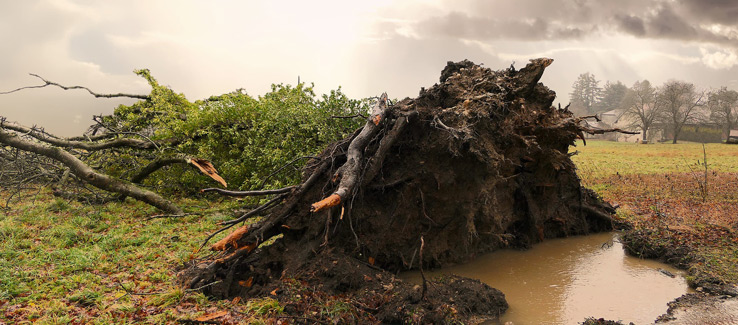Preparing Trees for Hurricane and Storm Season
In recent years, trees in the southeast have had to endure much more severe weather and close calls from hurricanes. Chances are that this hurricane and storm season will be no different.
Your trees surviving the next severe weather event may depend on the actions you take early on in the season. The greatest factor in your tree’s survival however is its health. Healthy trees are able to sustain minor and moderate damages and quickly recover from severe weather events.
It should be noted that during heavy soil saturation and sustained high winds, even healthy trees can succumb and fall under these conditions.
The team at Fast Tree Removal Services Atlanta has outlined the following measures to help preserve your trees and prevent them from causing catastrophic damages.
Protecting Trees from Severe Weather
We need to break this down into two perspectives. You can protect young trees that you are planting, and you can protect trees that have already reached maturity. Below we differentiate and outline steps to protect both types of trees.
Young Trees – When planting young trees, location and soil are everything. Knowing the species and its growing tendencies will help you properly place the tree, avoiding costly root damage to foundations, walkways, and paved streets.
Proper root development is fundamental to a tree’s health and its capacity to anchor itself to the ground when the winds try to whisk it away.
Soil treatment before planting along with proper fertilization and watering as the tree grows will entice its roots to grow strong and deep, which help it’s anchoring.
Staking the tree while it is young anchors it; this approach will keep it from being bent or broken by severe wind and weather. Likewise, planting rows of shrubs near these trees will serve to divert and weaken strong wind, as will structures and fences.
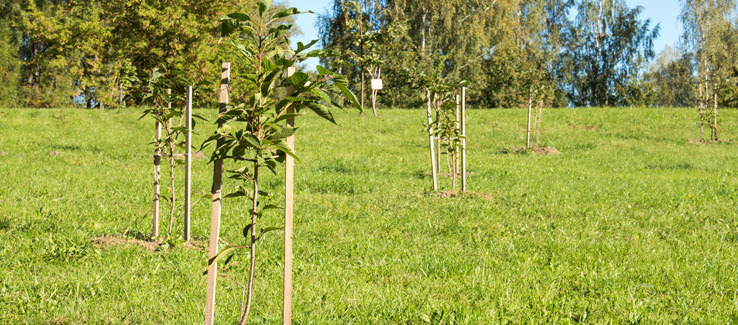
Mature Trees – First and foremost, you can protect the trees on your property by keeping them healthy. From seasonal pruning, pest control, and mulching, to annual arborist inspections, ample watering, and proper fertilization, your trees will be prepared to grow stronger each season.
Assess your yard or landscape. As mentioned above, planting rows of shrubs, helps to divert and weaken strong winds. Fences and well anchored structures readily accomplish this as well.
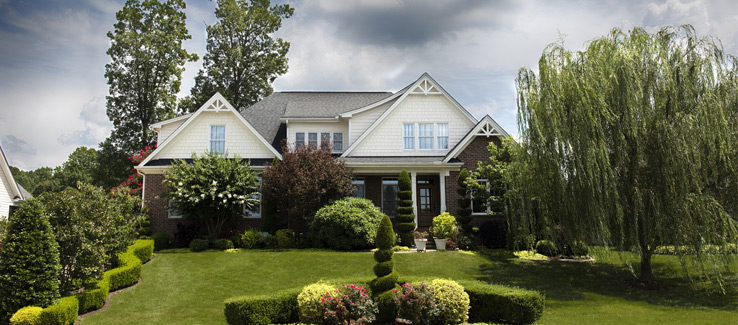
Tree Pruning and Crown Thinning
The proper annual pruning and crown thinning (when needed) work together to make trees healthier and more sturdy. While both actions remove mass from the tree, they serve different purposes, as outlined below:
Pruning Your Tree – This is fundamental to keeping disease and decay from setting in. Depending on the species, pruning should take place in the late fall or very early spring. However, whenever a serious problem is detected that requires pruning, it should be performed regardless of the season.
Crown thinning – This is the act of removing limbs and foliage from inside the crown. This process (when properly done) allows air to flow more freely through the crown, permits more sunlight to reach the inner leaves and branches of the tree, and removes a portion of the weight from the trunk and base of the tree.
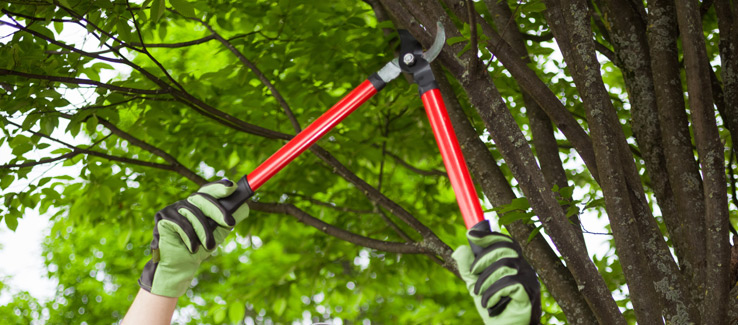
Annual pruning and proper crown thinning will give your tree a tremendous advantage during the storm season. Regarding thinning, less mass equals less resistance which equates to better chances of surviving severe weather events. Whereas pruning is an overall best practice that improves wellness and promotes a trees’ healthiest condition.
Trees Too Close to Your Home and Power Lines
That 70 foot red maple growing beside your property may be a cause for concern. When trees are planted too close to homes, businesses, and power lines, they have the potential to cause catastrophic damages and are potentially lethal.
Too Close to Home – When a tree is planted too close to a home and its height dwarfs that of the home, there is cause for several concerns.
The root system has more than likely not properly developed. It may have been diverted by the home’s foundation, or grown under or into it. This scenario typically results in a lack of stability, potential leaning, and possible loss of the tree in a major weather event.
The sway of the tree in the wind may cause branches and limbs to repeatedly strike the exterior of the home. If allowed to continue, the tree could eventually cause costly damage the home. More so, the tree may lose bark or sustain injuries allowing illness or infestation to set in.
If the tree is weakened by infestation or illness, it could easily topple in a storm. In this scenario, depending on how far the tree’s health has declined, it could fall at any time.
Watch the following video to see the potential catastrophic damage a tree can cause when falling on a house.
To remedy this situation, have the tree evaluated by a professional. If pruning and crown thinning aren’t sufficient remedies to make the tree safe, be prepared to have the tree removed. Being proactive fares better as it is less expensive than emergency tree removal and less disruptive than an unforeseen catastrophe.
Too Close to Power Lines – When the power goes out during a severe storm, a common cause is a fallen tree that has landed on or snapped power lines on its way down.
Trees that grow near power lines can become a serious hazard and even lethal. Once the upper extremities of a tree are within reach of power lines, it is important to take action.
Trees in contact with power lines may become energized. Do not approach or touch them, you may be seriously injured or electrocuted.
Watch this video to further understand the danger of trees in contact with power lines.
The majority of electric service providers have their own crew that attends to interfering trees. Once notified, they will likely dispatch a crew to trim back or cut away any parts of the tree that may cause damage to the power line.
Unfortunately, in many cases, these crews cut away too much of the tree for it to fully recover. The tree may now be at serious risk of infection or infestation and the tree’s removal may be required.
After a tree is cut in this manner, have the tree inspected by a professional to determine its health and whether or not it should be removed before a storm causes it to fall.
Tree Care After Severe Weather
During a storm or severe weather events, especially those with sustained high wind speeds, otherwise innocuous items left in yards or not secured on patios can become lethal projectiles.
When these objects slam into trees, they potentially damage and weaken the tree. If the object is large enough to increase wind pressure and stress on the tree, the tree may lose its stability and fall. This could also lead to the breaking of limbs or even the snapping of the trunk under the additional pressure.
After the storm has passed, inspect your tree for scars, limb loss, bark loss, leaning, or anything out of the ordinary.
When you detect that a tree has been damaged in a storm, call on a professional to inspect the tree and offer expert advice of how to remedy those damages before the next storm strikes.
Preventing Tree Damage and Catastrophic Loss
Loss prevention begins when you take proactive measures to avoid catastrophe.
Know where you are planting, the species you are planting, and how it will grow as it reaches maturity. Keeping the tree healthy and well pruned is the best measure you can take to help your tree survive severe weather.
For the trees that have reached maturity on your property, again, keeping them healthy, well pruned, and thinned when necessary will keep them strong and durable.
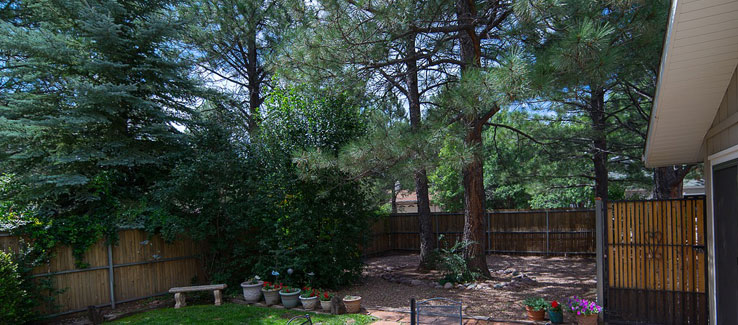
After severe weather, take action! Inspect your trees and take nothing for granted. If something looks wrong, chances are something is wrong. Call a professional to further assess the tree.
During this and every storm season, reach out to neighbors and friends to be proactive with their trees. For many, trees are not a worry – until they come crashing through their homes.
(404) 220-9965

